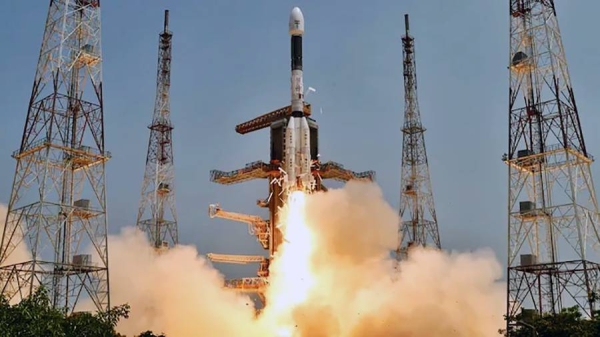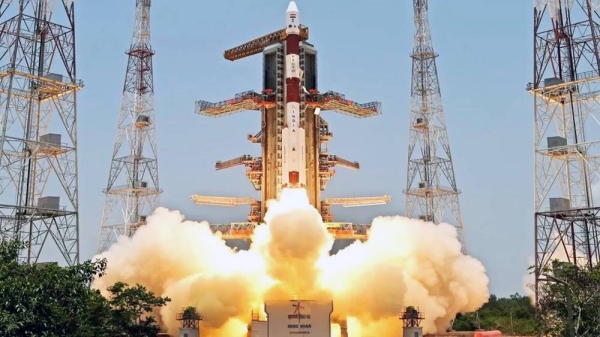
The Indian Space Research Organization (ISRO) successfully launched on Monday a second-generation navigation satellite onboard Geosynchronous Satellite Launch Vehicle (GSLV) rocket in South Indian state of Andhra Pradesh.
After 19 minutes flight, the (NVS-01) satellite was injected precisely into a Geosynchronous Transfer Orbit, and the “GSLV- F12/ NVS-01 Mission is accomplished,” the (ISRO) said in its official Twitter account.
The 51.7-meter-tall, three-stage (GSLV) took off from the second launch pad at the Satish Dhawan Space Centre, Sriharikota in south Indian state of Andhra Pradesh at 10.42 local time carrying the navigation satellite.
The rocket deployed the 2,232 kg satellite into the intended Geosynchronous Transfer Orbit at an altitude of about 251 km. It would help augment the India’s regional navigation system by providing accurate and real-time navigation for both civilian and strategic purposes.
The NVS-1 is the first satellite of the next-generation NavIC satellite aimed to augment the navigational capabilities of the country. The NavIC satellites are used in terrestrial, aerial, and marine transportation
The ISRO conducted the fifth launch of 2023 as it lifted off a 2,232-kilogram satellite, part of its NavIC series, into space.
The NVS-1 system was developed looking at the growing requirements of the Civil Aviation sector in the country for better positioning, navigation, and timing.
The NavIC satellites are used in terrestrial, aerial, and marine transportation, location-based services, personal mobility, resource monitoring, surveying and geodesy, scientific research, time dissemination and synchronization, and safety-of-life alert dissemination.
The payload is carrying an indigenously developed Rubidium atomic clock developed by the Space Applications Centre, Ahmedabad. “It is an important technology that only a handful of countries possess,” ISRO added.
The network covers an area including India and a region up to 1,500 km beyond the Indian boundary. The signals are designed to provide user position accuracy better than 20 meters and timing accuracy better than 50 nanoseconds.
The GSLV is a three-stage rocket that has emerged as one of India’s most successful launchers to deploy both domestic and customer satellites.
“Congratulations on the excellent GSLVF12 mission outcome. The satellite has been placed in a precise orbit. This mission is after the debacle of the GSLV F10 mission where we had an issue with the cryogenic state.
“I am happy that the updates and changes we have made to make the stage more reliable have been a success,” ISRO chairman S. Somnath said after the mission.
This is the second launch from the Indian space agency within a month and the fifth launch of the year, after the launch of the PSLV in April with two Singaporean satellites, and 7 Indian experiments.
The PSLV-C55 mission was launched with two satellites, with the primary one being the TeLEOS-2, a Synthetic Aperture Radar (SAR) payload. — Agencies











